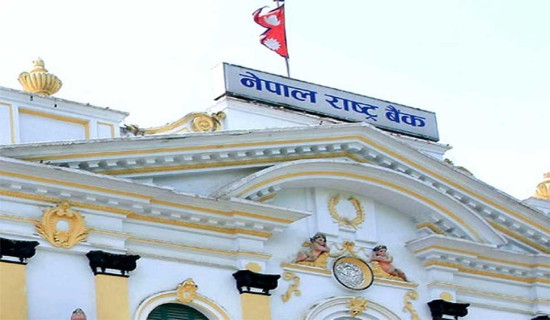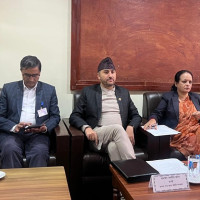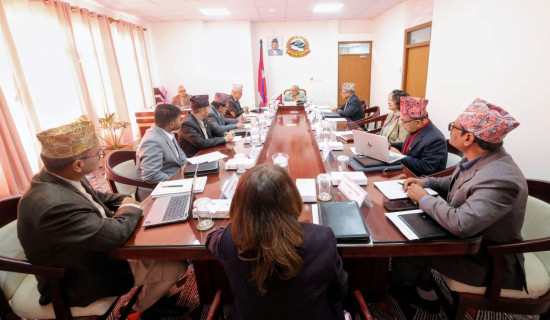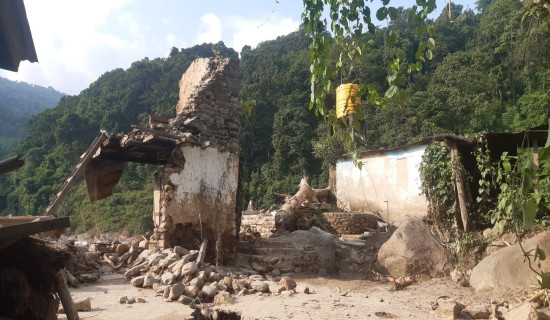- Tuesday, 16 December 2025
Leveraging Remittance For Productive Use
Nepal’s transformation has been shaped by freedom of movement. The political people’s movements transformed Nepal into a secular federal republic, while the physical movement of people across borders has driven socioeconomic transformation at an unprecedented pace. Since the 1990s, millions of Nepalis have left the country in search of employment abroad and sent billions of dollars back home. Today, at least one in four households has a family member living abroad and remittances surpass the combined flow of official development assistance and foreign direct investment. Yet behind these substantial macro-aggregates lies a deeper question: how long can Nepal rely on exporting remittance-generating labour services to keep its economy afloat?
Young people are at the heart of Nepal’s migration story. The country is in a rare window of opportunity known as the “demographic dividend”, where the share of the working-age population exceeds that of dependents. This demographic window is estimated to have opened in 1992, reached nearly 65 per cent working-age population by 2021, and is projected to close within the next two decades by 2047. However, without enough domestic jobs to absorb the young labour force, migration becomes a rational, even necessary, choice.
Breaking barriers
As demographics shift, so do migration patterns. Although men still constitute over 82 per cent of Nepal’s 2.1 million absentee population, more women are breaking barriers in a traditionally patriarchal society to join the global workforce. Migration is no longer limited to low-skilled jobs; it is expanding into sectors that demand higher education, skills, and training. Traditional destinations such as India, the Gulf, and Malaysia remain popular, but a rising number of Nepali migrants, especially educated youth, are settling in advanced economies like the United States, Europe, and Australia.
The impact of migration extends far beyond the absentee population. At nearly USD 11 billion, remittance inflows accounted for one-quarter of Nepal’s GDP. As of FY 2024/25, these inflows are fueling high consumption at over 93 per cent of GDP, helping reduce poverty from 42 per cent to 20 per cent, and boosting foreign exchange reserves to a record high of over USD 18 billion. What makes remittances even more substantial is their stability. Remittances are counter-cyclical as they tend to increase during times of crisis. Whether in the aftermath of the 2015 earthquake or the COVID-19 pandemic, Nepali migrant workers increased their transfers when they were needed the most.
At its core, migration is a story of freedom. As Nobel laureate Amartya Sen reminds us, development is about expanding people’s capabilities to lead lives they have reason to value. In many ways, migration is a vote with one’s feet. Young Nepalis today are not simply chasing material wealth abroad; they are responding to a revolution of rising aspirations. Exposure to the world through migration, globalisation, and social media has expanded their imagination of what is possible. Nepal’s persistently negative net migration rate signals a deeper structural gap in its development model, where upward mobility feels out of reach at home. Workers will naturally gravitate towards places where wages are higher. Once a few migrate, network effects kick in with one person’s decision opening the door for many family members, friends, and acquaintances to follow. Migration is often explained as hardship at home “pushing” youth out and better opportunities abroad “pulling” them in.
Too often, policy debates around “productive use” of remittances miss the point: institutional problems demand institutional solutions. It is easier to question how families spend remittances than to confront why people are compelled to migrate in the first place. In an economy with low productivity and limited job opportunities, what could be more productive for a household than investing in children’s education, paying off debt, or building a home? NLSS IV (2022/23) shows that over 70 per cent of remittances are used for daily consumption, with the rest for loan repayment, education, housing, and small investments. Put simply, migration serves as a means to an end for human capital development, which is just as crucial as physical capital for securing a better future.
Dutch Disease
Nepal’s overreliance on remittances resembles symptoms of Dutch Disease. As first observed in the Netherlands, heavy dependence on the export of a single resource, whether natural gas or labour services, can create conditions where large foreign currency inflows cause the value of domestic currency to appreciate. This makes other exports more expensive abroad and its domestic industries less competitive. As a result, the country can get trapped in a vicious cycle where the dominant resource crowds out other productive sectors. In Nepal’s case, the flow of remittances into import-based consumption raises the risk of crowding out agriculture and manufacturing while locking the country into a cycle of exporting its people instead of its products.
Nepal can break free by diversifying its linkages to the global economy. First, Nepal needs higher economic growth to expand its production possibilities frontier. Its comparative advantage sectors, such as agriculture, hydropower, tourism, and ICT, can be scaled up by strategically leveraging land linkages with its fast-growing neighbours, India and China. Second, Nepal needs to build inclusive institutions. The rollout of the biometric National ID can unlock the potential of digital public infrastructure to curb corruption leakages and improve public service delivery. Third, Nepal must prepare its youth for a skill-biased technological future. Nepal’s next transformation depends more on people choosing to stay or return than just on people leaving. To retain its youth or welcome them back, Nepal must create opportunities where freedom to be and to do is found not just abroad, but right here at home.
(Thapa holds an MA in Economics with specialisation in World Economy from Jawaharlal Nehru University, India.)

















